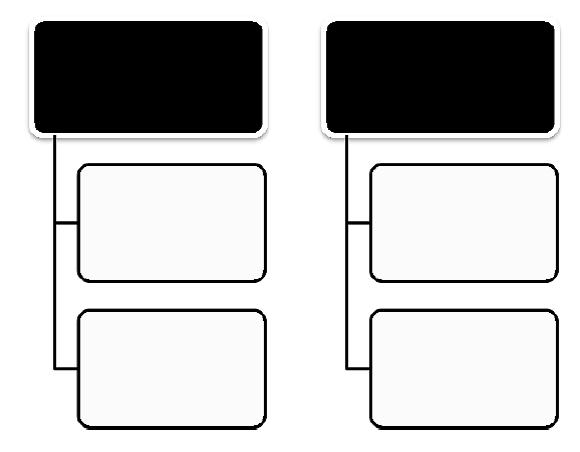Article formatting requirements
1. Before publishing all articles are checked by Computer Program eTXT Antiplagiat. We publish articles with unique text of at least 65%.
2. Tables in the text should be numbered and have captions placed over the table.
3. Article must contain the following information:
- information about authors - full name of the authors, degree, position, place of work;
- name of the article;
- abstract. The recommended amount of annotations - 300-500 characters;
- keywords (8-10 words or phrases). Each keyword or phrase is separated by a comma;
4. Included in the list of bibliographic cited addressed or referred to in the text of other documents associated with references to specific pieces of text. References which are included in the list of references are placed in brackets by the number with which it is listed in the list of references, and with page numbers, volume (issue, part, etc.), for example, [1, vol.2, p. 25].
References are placed after the article text, preceded by the word "References", issued in order of citation in the text (not in alphabetical order), numbered (starting with the first number).
References contain bibliographic information cited, considered or mentioned in the text another document, the necessary and sufficient to identify it and search.
Bibliographic references are made in the form of references in accordance with GOST R 7.0.5-2008 and GOST-7.82 2001.
Examples of references:
1. In the text: [10, p. 81] reference: 10. NA Berdyaev The sense of history. Mysl, 1990. 175 p.
2. In the text [Bakhtin, 2003, p. 18] reference: MM Bakhtin A formal method in literary scholarship: a critical introduction to social poetics. M. Maze, 2003. 192 p.
3. In the text [Tselishchev, Part 1, p. 17] reference: Tselishchev VV The philosophy of mathematics. Novosibirsk: Publishing House of the NSU, 2002. Ch 1-2.
Entries in the references must be made in accordance with GOST R 7.0.5-2008 and can be used to describe the bibliographic references section.
Examples of references:
1. Proffer K. The Silver Age of Russian Culture. Michigan Un., 1975; Boult G. The Silver Age: Russian Art of the Early 20th Century and the "World of Art Group". Calif. Un., 1979.
2. Jean Cassou Encyclopedia symbolism. Moscow, 1998; Payman A History of Russian Symbolism. M., 1998.
3. The history of Russian literature. The twentieth century: the Silver Age. Moscow, 1995.
4. See Sternin GY Artistic life of Russia 1900-1910's. M., 1988, His own. Artistic life of Russia in the early twentieth century. Moscow, 1976; Neklyudova MG Tradition and innovation in the Russian art of the late XIX - early XX century. Moscow, 1991.
5. GARF. F. 130. Op. 6. D. 305. L. 32-35.
6. See: V. Rudnev Dictionary culture of the twentieth century. M., 1997, Cultural Studies. The twentieth century. Dictionary. SPb., 1997, Jean Cassou Encyclopedia symbolism. Moscow, 1998; VG Vlasov Styles in art: Dictionary. The 3 tons SPb., 1995; The Cambridge History of Russian Literature. Camb. Univ. Press, 1992, etc.
7. Miliukov PN Living Pushkin. Moscow, 1997.
8. Oqup NA Contemporaries: Memoirs. Paris, 1961.
9. Ronen O. Silver Age as the intent and fiction. M., 2000.
10. News. 1909. Number 1.
11. Ibid.
12. Dirin AI Russian troops right to freedom of association / / Military Law: an online journal. 2007. URL: http://www.voennoepravo.ru/node/2149 (date accessed: 19.09.2007).
13. ES Markarian Key problems of the theory of cultural traditions / / Soviet Ethnography. 1981. Number 2. Pp. 78-96.
Example of an article:
Ivanova Olga Vladimirovna
PhD in Social Science, Assistant Professor of the Civil Law Department, Moscow State Social University
Legal status of a juvenile in the Russian Federation
Summary
The paper contemplates specifications of the national legislation regulating the legal status of juveniles. Basing upon the undertaken study the author deduces that a juvenile's legal status is a multisectoral institution, including the principles, which specify rights, freedoms and responsibilities of a person under 18 years old, the topics of multifaceted nature.
Keywords: specifications of Russia’s legislation, legal status of a juvenile, child, children, infants, juveniles, youth.
Family Code of the Russian Federation (hereinafter - RF IC) [1] in the art. 54 determines that a child is a person under 18 years of age. The concept of "children" is used as the plural form of the word "child" [2, p. 163]. The term "youth" is interpreted in different ways. As a rule, young people recognize the social and age group between 14 and 30 years (the age classification of the United Nations - 14-25 years old) [3, p. 28].
Table 1 - Name of the table
| Text | Text | Text | Text |
| Text | Text | Text | Text |

Figure 1 - The name of the picture
References
1. Family Code of the Russian Federation of December 29, 1995 № 223-FZ (as amended on 30.11.2011 № 363-FZ) / / Collected Legislation of the Russian Federation. 1996. Number 1. Art. 16, official portal of legal information. URL: http://www.pravo.gov.ru (date accessed: 01.12.2011).
2. Ozhegov S.I., Shvedova N.U. Dictionary of Russian language. M., 1998.
3. Rostovskaya Т.К., Rostovskaya I.V. On the development of the system of protection of minors and young people / / juvenile justice. 2010. Number 3.
